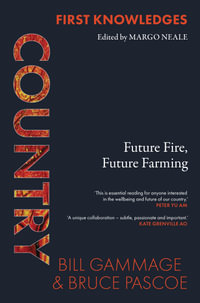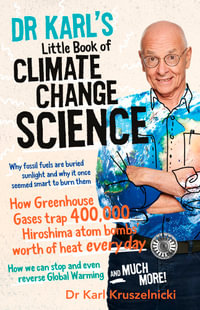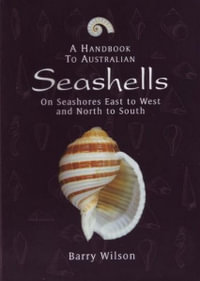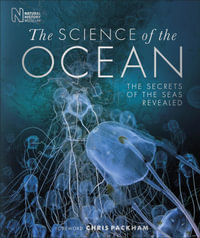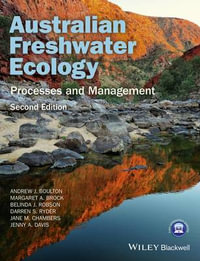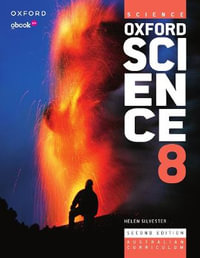
At a Glance
544 Pages
25.5 x 18.5 x 2.5
Paperback
RRP $105.95
$67.75
36%OFF
or 4 interest-free payments of $16.94 with
orAims to ship in 7 to 10 business days
|
Modification to the structure of the text Each chapter covering environments of deposition will be divided into two sections.
This approach is proposed to help draw a distinction between features that are important products of sedimentary processes in modern landscapes and the sedimentary products that will be preserved in the rock record. As an example, upland glacial processes create important sedimentary features in modern landscapes but are in regions of net degradation and will not be preserved in the longer-term rock record. The principle of using modern environments to interpret the sedimentary record will also be explored in more detail in terms of the limitations of the approach. Changes in the forms and diversity of plants and animals through time have very strongly impacted on sedimentary processes and products in both continental and marine environments. The differences between icehouse and greenhouse periods in Earth history also need to be taken into account when considering sedimentary environments. In particular, our current view of depositional environments is through the prism of the recent ice ages and many aspects of the greenhouse world would have looked very different. A simple ‘uniformitarian’ approach must therefore be used with care. Previous editions of the book made mention of these issues, but there will be more prominence to how changes in the planet through time impact on sedimentology.
Referencing In the past it was important to provide comprehensive citations of key pieces of information, but the ease of access to on-line reference materials has resulted in changing patterns of access to source material amongst students of geology. It remains important to provide users of this book with clear guidance on where further information about topics can be found in journal articles, books and on-line reference resources, but the use of citations and references will be modified. In place of citations within the text, key references will be listed at the ends of sections and chapters. This will improve the flow of the narrative in the text and make the text sections more concise. The reference lists will provide clear signposting of the key journal articles, reference texts and on-line resources that users of the book will find most relevant. [NOTE: following proposal review, the author has now backtracked on this idea a little and will include key references within the text.]
Diagrams In this edition full colour will be used for all diagrams and photographs. The style of diagrams used in the 2nd edition of the book will be retained, but all will be redrafted with additional information where appropriate and clarity improved. The revised structure of the book will result in some new diagrams being required. Additional photographs are now available from the author’s collection to illustrate both modern environments and examples of sedimentary features from the rock record.
Volume length The new edition will contain some new material although the overall scope of the 2nd edition will be retained. An increase in the overall length of the book is therefore anticipated with an aim to keep this to approximately 10%.
|
Preface xi
Acknowledgements xiii
About the Companion Website xv
Part A Sedimentary Materials, Processes and Products 1
1 Introduction to Sedimentology and Stratigraphy 3
1.1 Overview 4
1.2 Sedimentology 5
1.3 Stratigraphy 6
1.4 Sedimentology and Stratigraphy 7
Further Reading 8
2 Clastic Sediments: Gravel, Sand and Mud 9
2.1 Classification of Sediments and Sedimentary Rocks 10
2.2 Gravel and Conglomerate 12
2.3 Sand and Sandstone 15
2.4 Clay, Silt and Mudrock 26
2.5 Textures and Analysis of Clastic Sedimentary Rocks 29
2.6 Clastic Sediments: Summary 34
Further Reading 34
3 Biogenic, Chemical and Volcanogenic Sediments 35
3.1 Limestone 36
3.2 Evaporite Minerals 44
3.3 Cherts 46
3.4 Sedimentary Phosphates 47
3.5 Sedimentary Ironstone 47
3.6 Carbonaceous (Organic) Deposits 49
3.7 Volcaniclastic Sedimentary Rocks 51
Further Reading 52
4 Processes of Transport and Sedimentary Structures 53
4.1 Transport Media 54
4.2 The Behaviour of Fluids and Particles in Fluids 55
4.3 Flows, Sediment and Bedforms 60
4.4 Waves 70
4.5 Sediment Gravity Flows 73
4.6 Mudcracks 77
4.7 Erosional Sedimentary Structures 78
4.8 Terminology for Sedimentary Structures and Beds 79
4.9 Sedimentary Structures and Sedimentary Environments 81
Further Reading 82
5 Field Sedimentology, Facies and Environments 83
5.1 Field Sedimentology 84
5.2 Graphic Sedimentary Logs 85
5.3 Palaeocurrents 91
5.4 Sampling Sedimentary Rocks 94
5.5 Description of Core 96
5.6 Interpreting Past Depositional Environments 97
5.7 Reconstructing Palaeoenvironments 101
5.8 Summary: Facies and Environments 105
Further Reading 105
Part B Continental Environments 107
6 Continental Environments and Sources of Sediment 109
6.1 From Source of Sediment to Formation of Strata 110
6.2 Tectonic Uplift 110
6.3 Global Climate 111
6.4 Weathering Processes 112
6.5 Erosion and Transport 115
6.6 Denudation and Landscape Evolution 118
6.7 Continental Environments of Deposition 124
Further Reading 126
7 Glacial Environments 127
7.1 Distribution of Glacial Environments 128
7.2 Glacial Ice 129
7.3 Continental Glacial Environments 131
7.4 Continental Glacial Deposition 136
7.5 Marine Glacial Environments 138
7.6 Glacial Deposits in the Stratigraphic Record 140
7.7 Glacial Sedimentology and Stratigraphy 141
Further Reading 142
8 Aeolian Environments 143
8.1 Aeolian Transport 144
8.2 Characteristics of Wind- blown Particles 145
8.3 Desert Environments 146
8.4 Aeolian Bedforms 148
8.5 Stratigraphic Record of Aeolian Deposits 152
8.6 Aeolian Deposits Outside Deserts 155
8.7 Summary 157
Further Reading 158
9 Rivers and Alluvial Fans 159
9.1 Fluvial and Alluvial Systems 160
9.2 River Channels 162
9.3 Floodplain Deposition 170
9.4 Alluvial Fans 171
9.5 Fossils in Fluvial and Alluvial Environments 175
9.6 Soils and Palaeosols 176
9.7 Fluvial and Alluvial Stratigraphy 179
Further Reading 184
10 Lakes 185
10.1 Lakes and Lacustrine Environments 186
10.2 Freshwater Lakes 187
10.3 Freshwater Lake Clastic Deposits 190
10.4 Saline Lakes 193
10.5 Ephemeral Lakes 194
10.6 Lacustrine Carbonates 197
10.7 Lacustrine Stratigraphy 198
10.8 Recognition of Lacustrine Facies in the Stratigraphic Record 199
Further Reading 200
11 Volcanic Rocks and Sediments 201
11.1 Volcanic Rocks and Sediment 202
11.2 Transport and Deposition of Volcaniclastic Material 205
11.3 Eruption Styles 209
11.4 Facies Associations in Volcanic Successions 210
11.5 Volcanic Material in Other Environments 213
11.6 Volcanic Rocks in Earth History 214
Further Reading 215
Part C Marine Environments 217
12 The Marine Realm: Morphology and Processes 219
12.1 Oceans and Seas 220
12.2 Oceanic Currents 222
12.3 Wave and Storm Processes 222
12.4 Tides 223
12.5 Chemical and Biochemical Sedimentation in Oceans 228
12.6 Marine Fossils 230
12.7 Trace Fossils 231
Further Reading 235
13 Deltas 237
13.1 Modern Deltas 238
13.2 Variations in Delta Morphology 241
13.3 Syndepositional Deformation in Deltas 249
13.4 Deltaic Successions 249
13.5 Deltaic Cycles and Stratigraphy 254
13.6 Fossils in Deltaic Deposits 255
13.7 Recognition of Deltaic Deposits 255
Further Reading 256
14 Clastic Coasts and Estuaries 259
14.1 Coasts 260
14.2 Beaches 261
14.3 Wave- dominated Coastlines 265
14.4 Tidally Influenced Coastal Systems 269
14.5 Estuaries 271
14.6 Fossils in Coastal and Estuarine Environments 275
14.7 Recognition of Coastal and Estuarine Systems 276
Further Reading 277
15 Shallow Sandy Seas 279
15.1 Shallow Marine Environments 280
15.2 Storm and Wave- dominated Shallow Clastic Seas 282
15.3 Tide- dominated Clastic Shallow Seas 286
15.4 Responses to Change in Sea Level 290
15.5 Fossils in Sandy Shelf Successions 291
15.6 Criteria for the Recognition of Sandy Shallow Marine Sediments 292
Further Reading 293
16 Shallow Marine Carbonate and Evaporite Environments 295
16.1 Carbonate and Evaporite Depositional Environments 296
16.2 Coastal Carbonate and Evaporite Environments 299
16.3 Shallow Marine Carbonate Deposits 303
16.4 Carbonate Platform Facies and Successions 309
16.5 Marine Evaporites 314
16.6 Mixed Carbonate- clastic Environments 317
16.7 Recognition of Shallow Marine Carbonate and Evaporite Facies 318
Further Reading 319
17 Deep Marine Environments 321
17.1 The Deep Seas 322
17.2 Sediment Gravity Flow Processes in Deep Seas 323
17.3 Submarine Fans 325
17.4 Ancient Submarine Fan Systems 328
17.5 Slope Aprons 332
17.6 Ocean Current and Pelagic Sedimentation 333
17.7 Chemogenic Sediments 337
17.8 Fossils in Deep Ocean Sediments 337
Further Reading 339
Part D Post-depositional Processes 341
18 Soft Sediment Deformation 343
18.1 Deformation After Deposition 344
18.2 Large- scale Post- depositional Features 350
Further Reading 353
19 Diagenesis 355
19.1 Diagenetic Processes 356
19.2 Clastic Diagenesis 363
19.3 Carbonate Diagenesis 366
19.4 Diagenesis of Volcaniclastic Sediments 369
19.5 Formation of Coal, Oil and Gas 370
Further Reading 375
Part E Stratigraphy 377
20 Stratigraphy: Concepts and Lithostratigraphy 379
20.1 Geologic Time 380
20.2 Stratigraphic Units 385
20.3 Lithostratigraphy 385
20.4 Applications of Lithostratigraphy 391
Further Reading 394
21 Biostratigraphy 395
21.1 Fossils in Sedimentology and Stratigraphy 396
21.2 Classification of Organisms 397
21.3 Evolutionary Trends 398
21.4 Biozones and Zone Fossils 400
21.5 Taxa Used in Biostratigraphy 404
21.6 Applied Biostratigraphy 408
21.7 Biostratigraphy and Other Stratigraphic Techniques 409
Further Reading 410
22 Dating and Correlation Techniques 411
22.1 Techniques for Dating and Correlation 412
22.2 Radiometric dating 412
22.3 Magnetostrati graphy 416
22.4 Chemostrati graphy 418
22.5 Dating in the Quaternary 421
Further Reading 423
23 Subsurface Stratigraphy and Sedimentology 425
23.1 Introduction to Subsurface Stratigraphy and Sedimentology 426
23.2 Seismic Reflection Data 426
23.3 Borehole Stratigraphy and Sedimentology 432
23.4 Petrophysical Logging 435
23.5 Subsurface Facies and Basin Analysis 440
Further Reading 441
24 Sequence Stratigraphy and Sea Level Changes 443
24.1 Sea- level Changes and Sedimentation 444
24.2 Depositional Sequences and Systems Tracts 452
24.3 Parasequences: Components of Systems Tracts 457
24.4 Carbonate Sequence Stratigraphy 461
24.5 Applications of Sequence Stratigraphy 463
24.6 Causes of Sea Level Fluctuations 467
24.7 Sequence Stratigraphy: Summary 473
Further Reading 474
25 Sedimentary Basins 475
25.1 Controls on Sediment Accumulation 476
25.2 Basins Related to Lithospheric Extension 478
25.3 Basins Related to Subduction 484
25.4 Basins Related to Crustal Loading 486
25.5 Basins Related to Strike- slip Tectonics 489
25.6 Complex and Hybrid Basins 490
25.7 The Record of Tectonics in Stratigraphy 490
25.8 Sedimentary Basin Analysis 492
25.9 Integrating Sedimentology and Stratigraphy: the History of the Earth’s Surface 495
Further Reading 496
References 497
Index 511
ISBN: 9781119417286
ISBN-10: 1119417287
Published: 28th August 2023
Format: Paperback
Language: English
Number of Pages: 544
Audience: Professional and Scholarly
Publisher: John Wiley & Sons (UK)
Country of Publication: US
Edition Number: 3
Dimensions (cm): 25.5 x 18.5 x 2.5
Weight (kg): 1.14
Shipping
| Standard Shipping | Express Shipping | |
|---|---|---|
| Metro postcodes: | $9.99 | $14.95 |
| Regional postcodes: | $9.99 | $14.95 |
| Rural postcodes: | $9.99 | $14.95 |
How to return your order
At Booktopia, we offer hassle-free returns in accordance with our returns policy. If you wish to return an item, please get in touch with Booktopia Customer Care.
Additional postage charges may be applicable.
Defective items
If there is a problem with any of the items received for your order then the Booktopia Customer Care team is ready to assist you.
For more info please visit our Help Centre.
